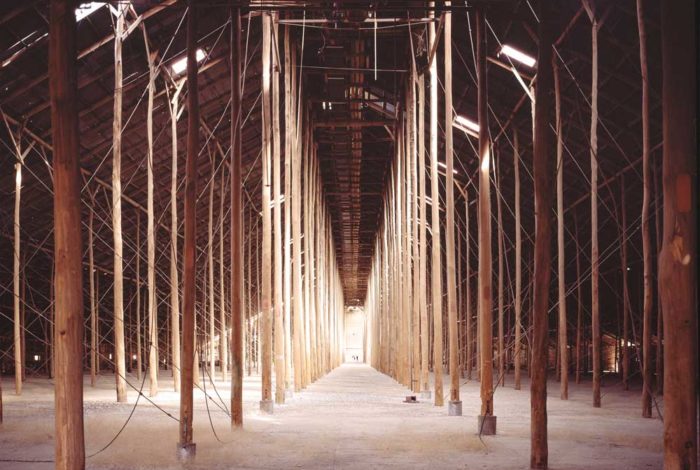- Bruce Thomas Heritage Victoria & Heritage Council of Victoria

5. Times of change: Local heritage versus local economics
The Murtoa No.1 Grain Store started life as a practical structure. An Emergency Grain Store, the first of its type and was followed a year later by the larger Murtoa No. 2 Grain Store. Over the next thirty years, the sheds slowly began to deteriorate, requiring increasing maintenance.
Wheat buyer demands forced grain handlers to adapt to new measures.
The Stick Shed mixed the good grain with the poor and offered no way of separating wheat into grades.
Buyers wanted more options, the stockpiling wheat according to quality using bunkers became common practice.
The need for these massive grain stores diminished and the Murtoa No.2 Grain Store was demolished in 1975. The No.1 Grain Store, the last Stick Shed used in Australia, also became surplus to the wheat industry’s needs in 1989 and was emptied for the last time by the Grain Elevators Board in 1990, when its last contents of 30,000 tonnes were railed away.
The demand for bunker land was increasing and the Murtoa Grain Elevators Board site was stretched. The debate grew louder throughout the region around whether the Murtoa No.1 Grain Storage should be pulled down to make way for efficient grain bulk handling on the rail or kept as an important historical structure.
A local group lobbied to keep the structure as part of the region’s heritage, despite being deemed contrary to economic progress in bulk grain management.
It was added to the Victorian Heritage Register in 1990 and placed on the National Heritage list in 2014.
The Historic Buildings Council protected the Stick Shed from 1990 and funded the entire restoration via Heritage Council funds in the 2009-2013 period.

